Chinese Maple Trees are popular with gardeners and landscape designers. These trees, from East Asia, have stunning fall colors. The leaves turn deep red or bright yellow. Chinese Maple Trees are usually small to medium-sized. This makes them good for different garden sizes. They work well in large landscapes or small urban gardens.
The Chinese Maple Tree is popular in gardening. This is because it is beautiful and can grow in many places. These trees can live in different types of soil and climates. This makes them a good choice for all gardeners. The Chinese Maple Tree is interesting all year round. It has colorful leaves, nice bark, and a graceful shape. These trees also need little care once they are grown. This makes them appealing to both new and experienced gardeners.
This guide gives details on Chinese Maple Trees. It covers planting, pruning, care, and growing new trees. Whether you want to add a Chinese Maple Tree or improve an existing one, this guide has useful tips. By the end, you’ll know how to grow and care for healthy, beautiful Chinese Maple Trees in your garden.
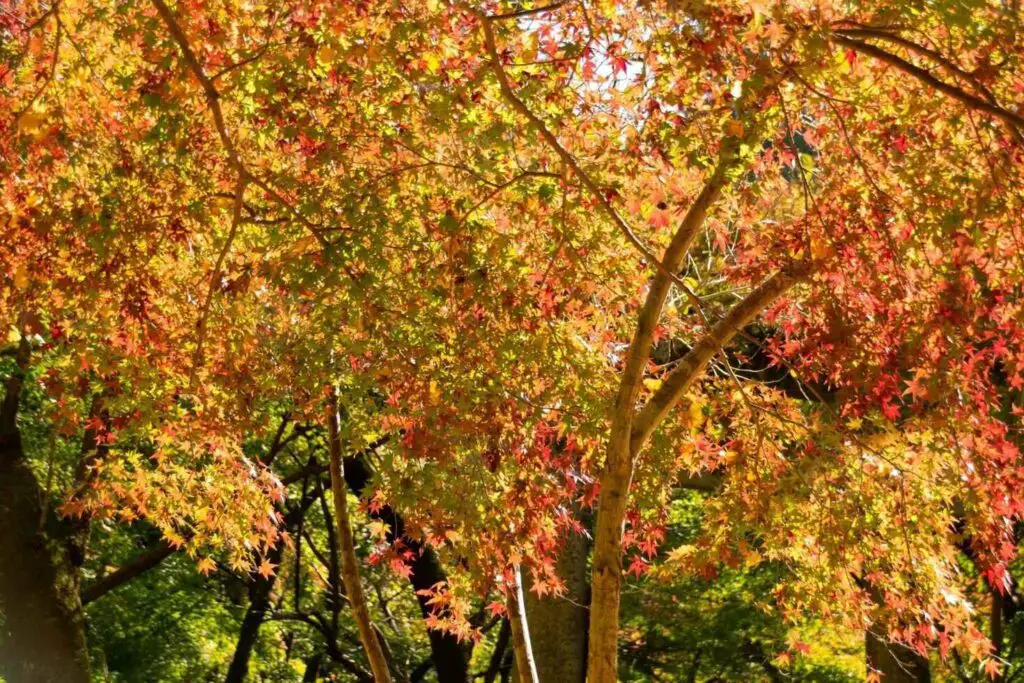
Botanical Information
Description and Characteristics
Chinese Maple Trees have unique and nice leaves. The leaves look like an open hand with pointed parts. In spring and summer, the leaves are usually green. But as the seasons change, the leaves turn into amazing colors. In fall, the leaves can be deep red, bright orange, or bright yellow. This makes a beautiful view.
Chinese Maple Trees are usually small to medium-sized trees that lose their leaves each year. They can grow to 15 to 25 feet tall. Their branches often spread out as wide as the tree is tall. These trees grow at a moderate pace. They have a graceful, layered branch structure that makes them look nice. Chinese Maple Trees work well in different garden settings. They can be the main focus in a landscape, or used to add interest to a mixed border. They can even be grown in containers on patios and terraces.
Chinese Maple Trees come from East Asia, especially China and Japan. They grow well in places with mild climates, like USDA zones 5 to 8. These trees like soil that drains well and can grow in different soil types, from sandy loam to clay. Chinese Maple Trees do best in full sun or partial shade, so they work well in many gardens. They are also strong and can handle different weather conditions, though they prefer moderate humidity and shelter from strong winds.
Varieties of Chinese Maple Trees
Chinese maple trees come in a variety of types, each with special qualities that meet various practical and esthetic gardening demands. Several well-liked variations include of:
- Acer truncatum is a type of maple tree. It’s called the Shantung Maple. People like this tree because it can handle dry conditions well. It also has beautiful fall colors.
- Acer davidii is called the Snakebark Maple. It has green and white striped bark. It also has beautiful fall leaves.
- Acer griseum is the Paperbark Maple. It has special bark that peels off. The leaves turn bright orange-red in the fall.
- Acer palmatum is often called a Japanese Maple Tree. However, some types are actually Chinese Maple Trees. This is because of where they come from and how they look.
Planting Chinese Maple Trees
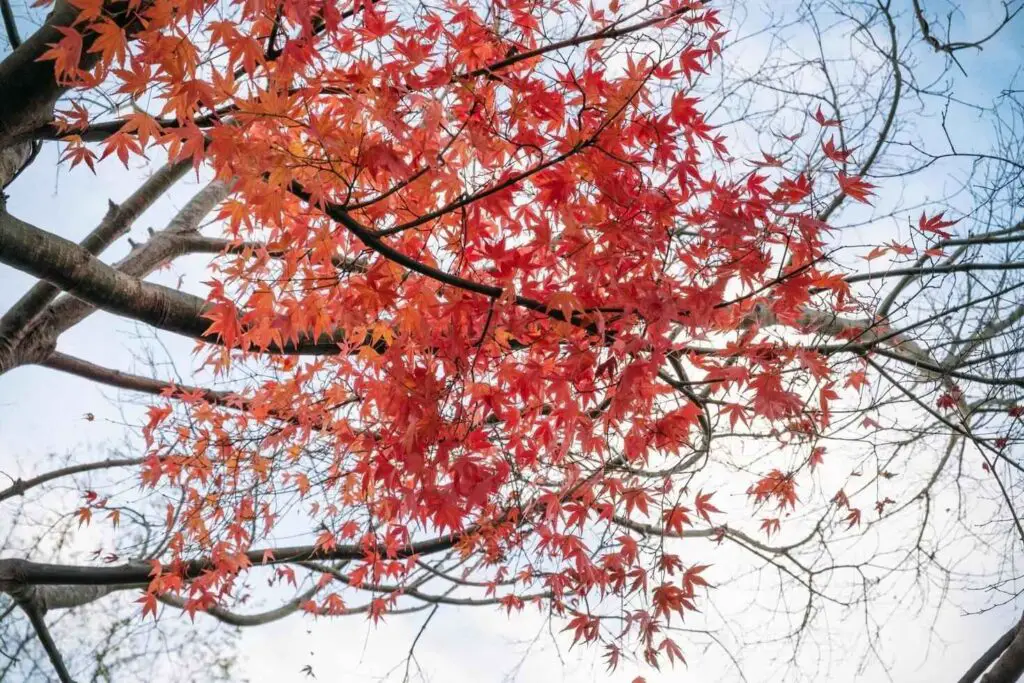
A. Selecting the Right Site
Soil Requirements
Chinese Maple Trees do well in soil that is well-drained and rich in organic matter. They can grow in different types of soil, like loam and clay. But they prefer soil that is a bit acidic or neutral. Proper drainage is very important. Waterlogging can cause root rot and other problems.
Sunlight and Shade Considerations
When choosing a spot to plant Chinese Maple Trees, think about how much sun and shade they like. They prefer full sun to partial shade, but can handle some shade, especially in hot areas. Too much shade may make the leaves less colorful and the tree less healthy.
B. Preparing the Soil
Test the soil pH before planting Chinese Maple Trees. The pH should be between 5.5 and 7.0. If needed, add organic matter like compost or manure to improve the soil. Don’t use lime if the pH is already in the right range.
Chinese Maple Trees need well-drained soil. This prevents waterlogging. Waterlogging can suffocate the roots and cause poor growth. If the soil has poor drainage, add materials like perlite or sand. This will improve drainage and air flow in the soil.
C. Planting Process
When the weather is mild and the tree is dormant, early spring or fall are the ideal seasons to grow Chinese maple trees. Extreme heat or cold should not be experienced when planting as this can stress the tree and hinder germination.
Step-by-Step Planting Instructions
- Dig a hole double the width and slightly shallower than the tree’s root ball.
- Take the tree out of its container carefully, and if the roots are circling the root ball, untangle them gently.
- Position the tree in the middle of the hole so that the top of the root ball is level with the soil around it.
- Fill back in around the tree with soil, packing it gently around the roots to eliminate any air pockets.
- To settle the ground and encourage the roots to start growing, give the tree plenty of water.
D. Watering and Initial Care
After planting, water the Chinese Maple Tree deeply. This ensures the soil around the roots is moist. Continue to water regularly, especially during dry periods. This keeps the soil moist but not too wet. Apply mulch around the base of the tree. This helps retain moisture and prevent weeds. Watch the tree closely for signs of stress, like wilting or yellow leaves. Adjust watering as needed. Avoid fertilizing newly planted Chinese Maple Trees. Wait until after the first growing season when they are established.
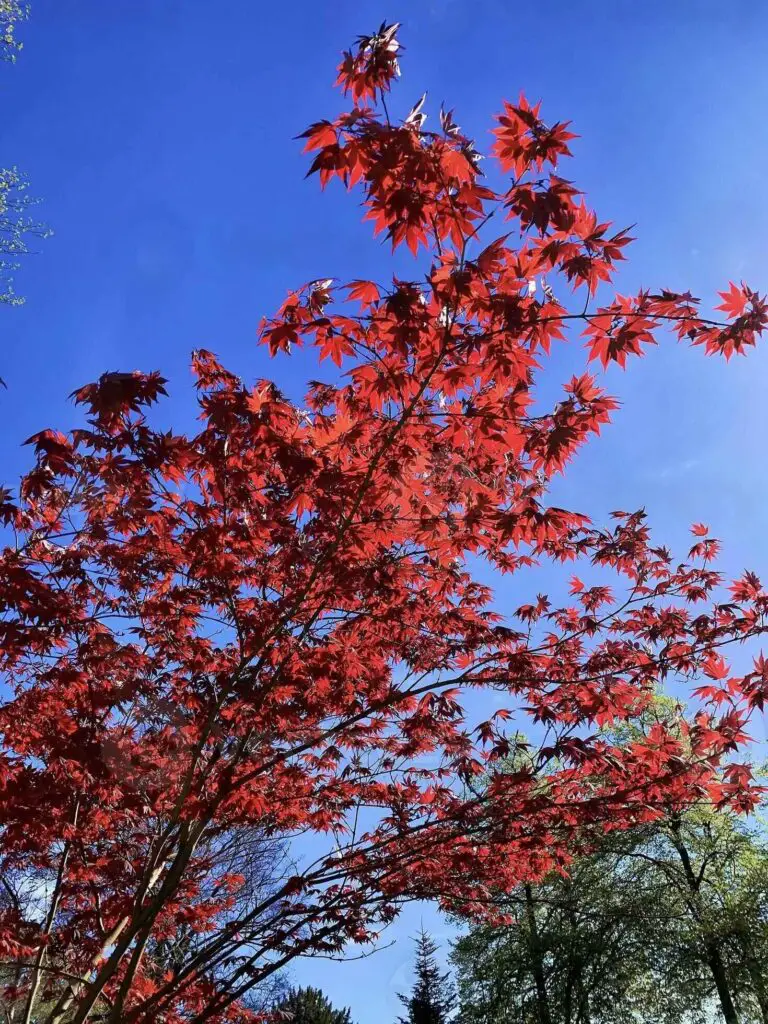
Caring for Chinese Maple Trees
A. Watering Schedules and Techniques
Have a watering plan for Chinese Maple Trees. Water them deeply, especially in hot, dry times. Make sure the soil around the roots is moist but not wet. Avoid short, frequent watering. This can make the roots grow close to the surface. This makes the tree more likely to have problems.
Use a soaker hose or drip irrigation system to water the base of the tree. This helps reduce water waste and the risk of fungal diseases. Avoid overhead watering. Wet leaves can cause foliar diseases.
B. Fertilization
Select a fertilizer made for trees and bushes. Look for one with a nitrogen-phosphorus-potassium (N-P-K) ratio around 10-10-10 or similar. Don’t use high-nitrogen fertilizers. They can make the leaves grow a lot, but that’s not good for the overall health of the tree.
Apply fertilizer to Chinese Maple Trees early in spring before new growth starts. Follow the instructions on the fertilizer package. Spread the fertilizer evenly around the outer edge of the tree. Avoid the trunk area. Water the soil well so the nutrients can soak in.
C. Pest and Disease Management
Chinese maple trees may get pests like aphids, scale insects, and caterpillars. Check the tree often for signs of pests. These include distorted leaves, sticky liquid, or visible insects. Use insecticidal soap, neem oil, or horticultural oil to control minor pest problems. Follow the label instructions carefully.
To stop leaf diseases like anthracnose and mildew, make sure the tree has good air flow. Don’t water from above. Quickly remove and destroy any infected leaves or branches. This stops the disease from spreading. In severe cases, you may need to use fungicide sprays, especially in wet weather. Choose a fungicide made for Chinese Maple Trees and follow the instructions.
Pruning Chinese Maple Trees
Pruning is vital for keeping Chinese Maple Trees healthy, shaped, and structured. It gets rid of dead, damaged, or sick branches. This helps air and sunlight reach the tree’s canopy. It also boosts the tree’s growth and development.
The best time to trim Chinese Maple Trees is in late winter or early spring, before new growth starts. Trimming during this time is less stressful for the tree. It also lowers the chance of sap leaking from fresh cuts. Don’t trim in summer, as this can make the tree more vulnerable to pests and illnesses.
Tools Needed
To properly prune Chinese Maple Trees, you’ll need sharp pruning tools. These include: .
Pruning shears are for cutting small branches up to 1 inch wide. Loppers are for cutting larger branches that are 1 to 2 inches wide. A pruning saw is for removing larger branches or limbs.
Keep your pruning tools clean and sharp. This will make clean cuts and cause less damage to the tree.
Pruning Techniques
Pruning Techniques
- Start by cutting any dead, broken, or crossing branches. Use pruning shears or loppers to do this.
- Prune the branches to improve air flow and sunlight throughout the tree’s leaves.
- Maintain the desired shape of the tree. Prune branches selectively. This creates a balanced and nice-looking tree.
- Occasionally, take a step back to look at the whole shape of the tree. Then, make any changes that are needed.
Cutting Unhealthy Tree Branches
- Identify and remove any unhealthy branches. This prevents the spread of disease and keeps the tree healthy.
- Make clean cuts just outside where the branch meets the trunk.
- Avoid leaving stubs, as they can attract pests and slow down the tree’s healing.
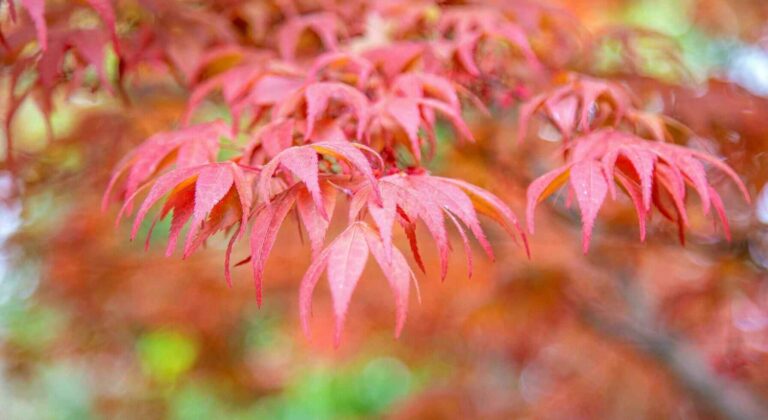
Propagation of Chinese Maple Trees
Seed Propagation
- Gather mature seeds from healthy Chinese Maple Trees in the fall season.
- Clean the seeds. Soak them in water for 24 hours. This softens the seed coat.
- Sow the seeds in a tray filled with potting mix that drains well.
- Cover the seeds lightly with soil. Then, water the soil gently.
- Keep the soil continually moist and place the seed tray in a warm, sunny spot.
- Depending on the circumstances, germination could take many weeks to months.
Cuttings
- Take cuttings 6-8 inches long from healthy Chinese Maple Trees. Do this in late spring or early summer.
- Take off the lower leaves. Then, put the cut end of each cutting into rooting hormone.
- Put the cut-off stems in a pot. The pot should be filled with a mixture of perlite and peat moss.
- Water the cut pieces well. Put them in a warm, moist place with indirect sunlight.
- Keep the soil moist. Mist the cuttings often to keep the air humid.
- Roots will grow in a few weeks or months. After that, the cuttings can be moved to their own pots.
Grafting
- Choose a healthy rootstock and scion (the Chinese Maple you want). Make sure the rootstock and scion have similar widths.
- Make a diagonal cut on the root part and scion part. Make sure the cuts fit together exactly.
- Join the two pieces together. Use a grafting tape or rubber band to hold them in place.
- Cover the graft joint with grafting wax. This seals out moisture and helps the graft heal.
- The grafted plant should be placed in a warm, humid area that receives indirect sunshine.
- If any shoots appear below the graft union, cut them off. Keep an eye out for signs of healing and growth at the graft union.
Caring for Young Plants
- Young plants, like seedlings, cuttings, or grafts, need protection. Keep them in an area with filtered sunlight. This protects the young plants.
- Water the plants regularly. Keep the soil moist but not too wet.
- Protect young plants from extreme weather. Keep them safe from frost and strong winds.
- Fertilize the plants occasionally after they are established. This helps the plants grow in a healthy way.
- Slowly get young plants used to being outside before you put them in the garden.
To learn more about Chinese maple tree propagation methods, follow this link for comprehensive advice and insights.
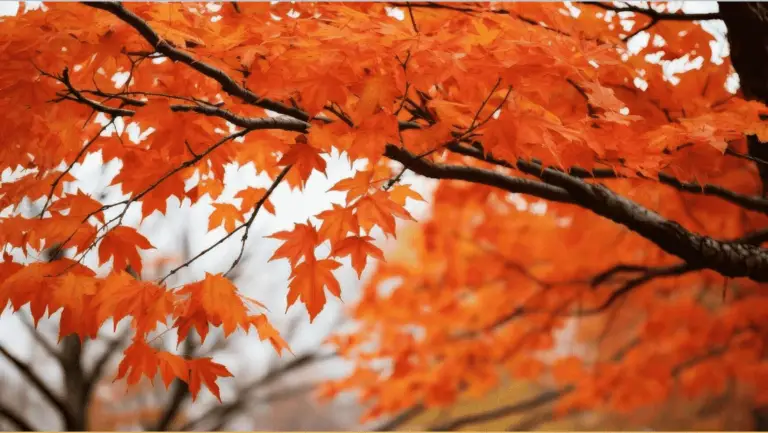
Common Issues
Leaf Discoloration and Drop
- Giving too much or too little water can stress the plant’s roots.
- Lacking nutrients, like nitrogen or iron, can also cause problems.
- Pests like aphids, scale insects, or spider mites can be an issue.
- Fungal diseases such as anthracnose or powdery mildew can occur.
- Environmental stresses like extreme heat or drought can affect the plant as well.
Solutions
- Adjust watering to keep soil moist. But do not overwater. Make sure the soil moisture is steady.
- Test the soil’s pH and nutrient levels. Then, add the needed fertilizers to improve the soil.
- Monitor pests right away. Use insecticidal soap or neem oil to treat them.
- Prune infected leaves. This prevents the spread of fungal diseases.
- Protect your plants from environmental stress. Keep the growing conditions ideal for your plants.
Slowing Growth
- Poor drainage or poor soil quality.
- rivalry between surrounding plants for water and nutrients.
- Damage to the roots or improper pruning.
- illnesses or pests that harm the roots.
- either too little sunlight or too many people.
Solutions
- Improve soil quality by adding organic matter. Also, make sure the soil has good drainage.
- Provide space between plants. This reduces competition between them.
- Prune any damaged or sick roots. Make sure the roots develop well when planting.
- Address any pest or disease problems quickly. This prevents further damage.
- Chinese maple trees need enough sunlight and good air flow.
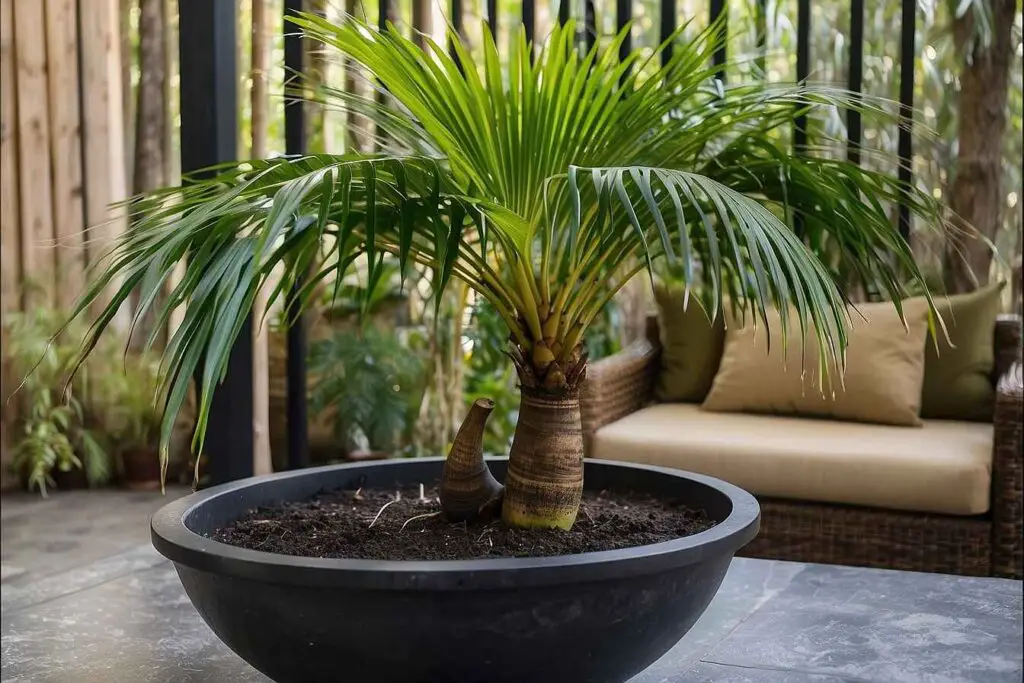
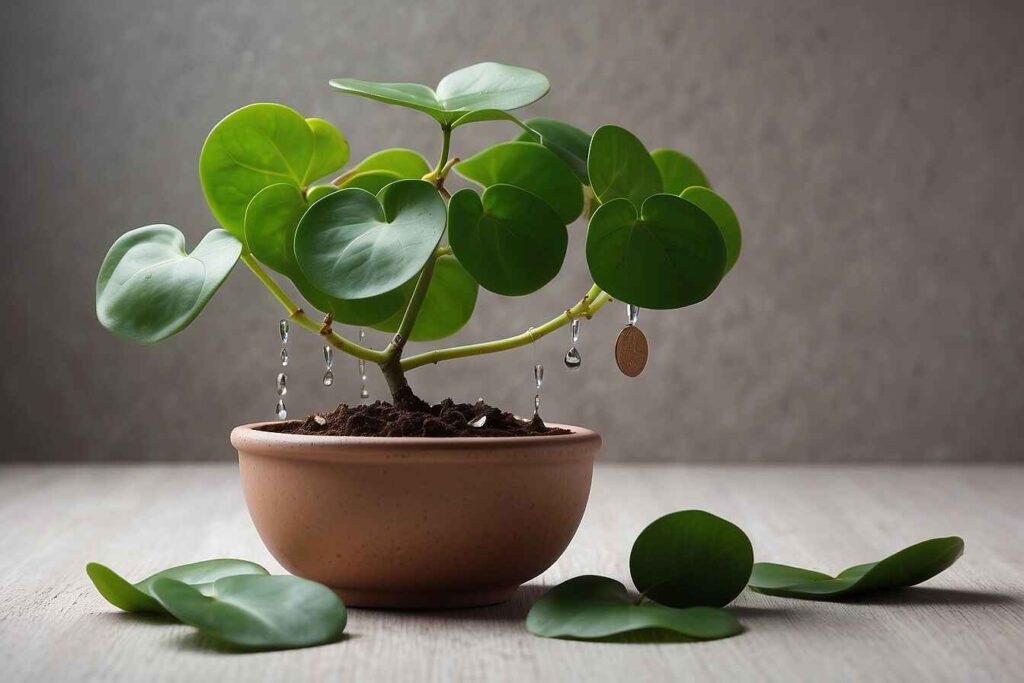
Please write more in details. otherwise easy to understand